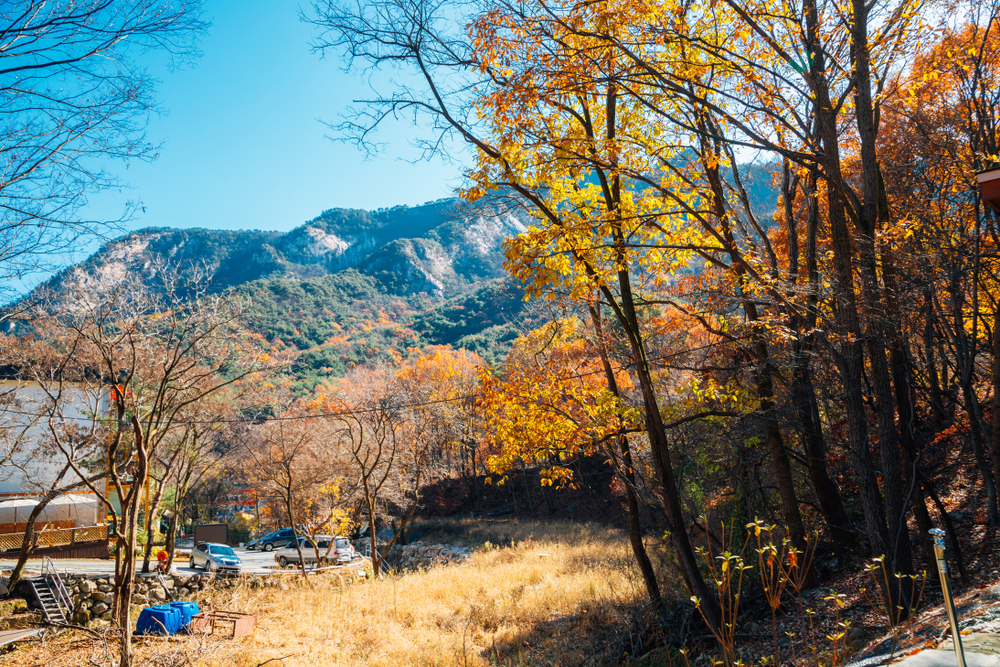Gyeryongsan Overview
Gyeryongsan National Park, known as 계룡산국립공원 in Korean, is one of South Korea’s oldest and most culturally significant national parks. Located in the central region of the country, near Daejeon and Gongju in Chungcheongnam-do Province, the park spans 24 square miles (62.1 square kilometers). Gyeryongsan, meaning “Rooster Dragon Mountain,” derives its name from the ridgeline’s resemblance to a dragon with a rooster’s crest. The park was established in 1968 and is celebrated for its stunning natural beauty, rich biodiversity, and cultural heritage.
The terrain of Gyeryongsan National Park is dominated by the dramatic peaks and ridges of Gyeryongsan Mountain, with its highest point, Cheonhwangbong Peak, reaching 2,772 feet (845 meters). The park’s landscape is characterized by rugged granite cliffs, dense forests, and pristine valleys. Majestic waterfalls like Eunseon Waterfall and Yongmun Waterfall enhance the area’s natural charm, while streams and picturesque ponds dot the valleys. The vegetation varies from temperate deciduous forests to mixed coniferous woods, featuring species such as pine, oak, and maple trees. In autumn, the park transforms into a vibrant display of red, orange, and gold foliage, attracting countless visitors.
Gyeryongsan National Park is home to diverse wildlife, offering a haven for various species of mammals, birds, and amphibians. Visitors may encounter mammals such as raccoon dogs, weasels, and squirrels. Bird enthusiasts are drawn to the park for its avian population, including species like the Korean magpie, goshawk, and oriental turtle dove. The park also supports a variety of smaller creatures, including frogs and insects that thrive in its moist forested areas. The biodiversity of Gyeryongsan underscores the park’s ecological significance.
One of the park’s key attractions is its cultural heritage. Gyeryongsan is deeply intertwined with Korean Buddhism, and several historic temples, including Donghaksa, Gapsa, and Sinwonsa, are nestled within the park’s boundaries. These temples offer serene spaces for meditation and exploration, and their centuries-old architecture adds to the park’s allure. Additionally, Gyeryongsan is considered a sacred mountain in Korean shamanism, and its mystical ambiance attracts spiritual seekers.
Visitors to Gyeryongsan National Park can enjoy a wide range of activities. Hiking is the most popular way to experience the park, with well-maintained trails leading to various peaks, temples, and scenic viewpoints. The Gyeryongsan Mountain Ridge Trail is particularly famous for its panoramic vistas. For a more leisurely experience, visitors can explore the temples or enjoy picnics in the serene forested areas. Seasonal festivals, such as the Gyeryongsan Maple Festival, celebrate the park’s beauty and cultural significance.
Despite its beauty, Gyeryongsan faces conservation challenges, including the pressure of increasing tourism and environmental degradation. However, the park’s management has implemented measures to mitigate these issues, including habitat restoration projects and strict regulations on visitor activities. These efforts have helped preserve the park’s natural and cultural heritage, ensuring it remains a treasured destination for future generations.










































































